Few people may realize that all 50 states and the District of Columbia allow some type of concealed carry of a firearm. Of those, 34 states require some kind of permit, whether it be a “may” or “shall” issue permit. In addition, there are now 20 states that have permit-less or “constitutional carry” laws that allow residents, in most cases, to carry a weapon openly or concealed without a permit.
This increasing number of states allowing a concealed carry firearm has helped its normalization. The recent spike in first-time gun owners over the last 18 months has led to an increase in those wanting to carry their pistols regularly. However, they are unsure how to do it, what to look for or what gun holster would fit them best. Let’s break down the carry methods, the anatomy of a holster, and different carry positions.
CARRY METHODS
There are countless ways to carry a firearm. The two main methods are:
- Outside the waistband – (OWB)
- Inside the waistband – (IWB)
However, you can also carry in a host of other methods. Here are just some of the different techniques to carry and what each looks like.
INSIDE THE WAISTBAND (IWB)
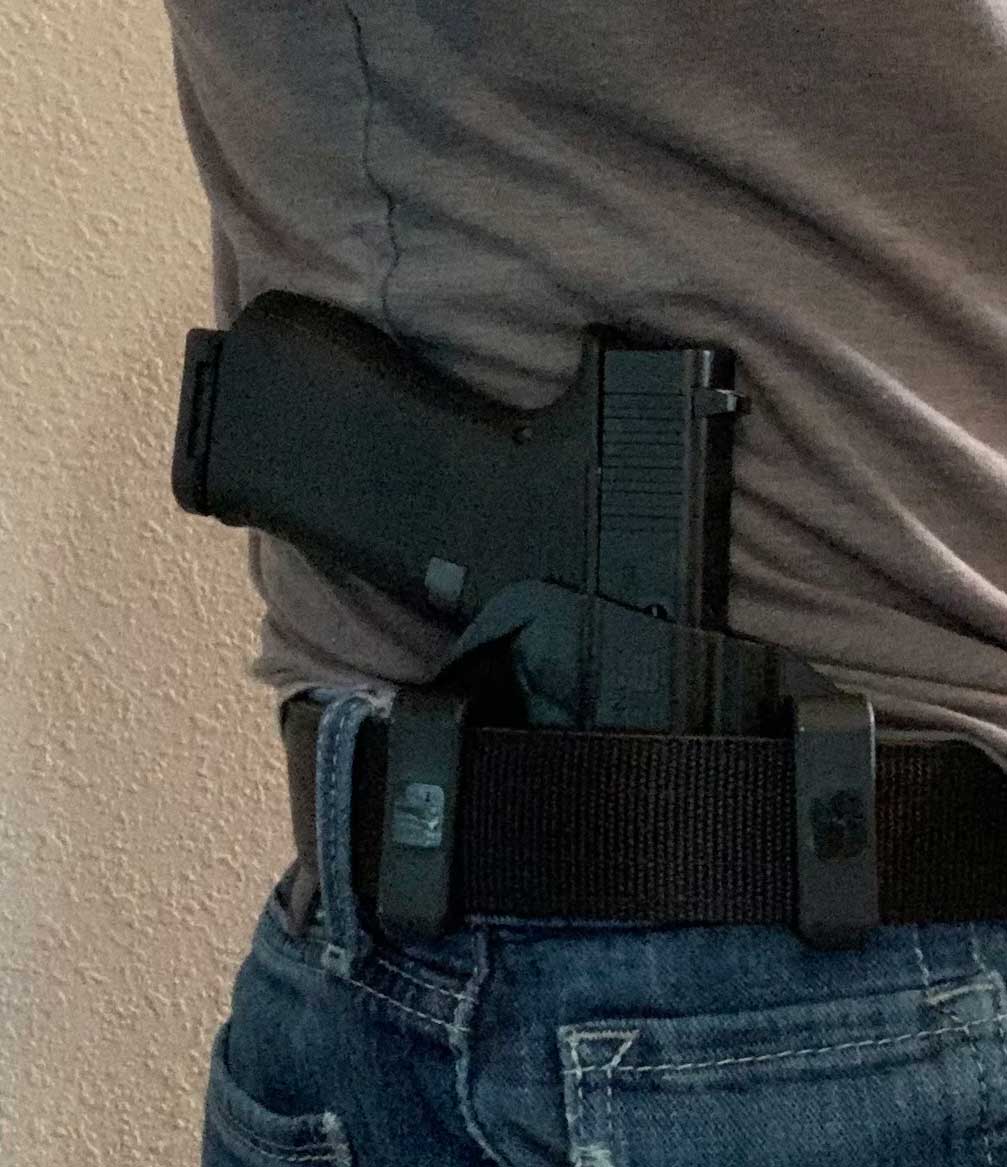
Inside the waistband carry is one of the most popular ways to carry, and it has become very effective in concealing your pistol, especially for compact and smaller-sized firearms. It uses the waistband of your pants to not only secure the gun against your body but also allow your clothes to conceal it better. However, some may find this way of carrying to be uncomfortable due to the pistol being pressed up against the body and the rigid material used to create the holster.
OUTSIDE THE WAISTBAND (OWB)
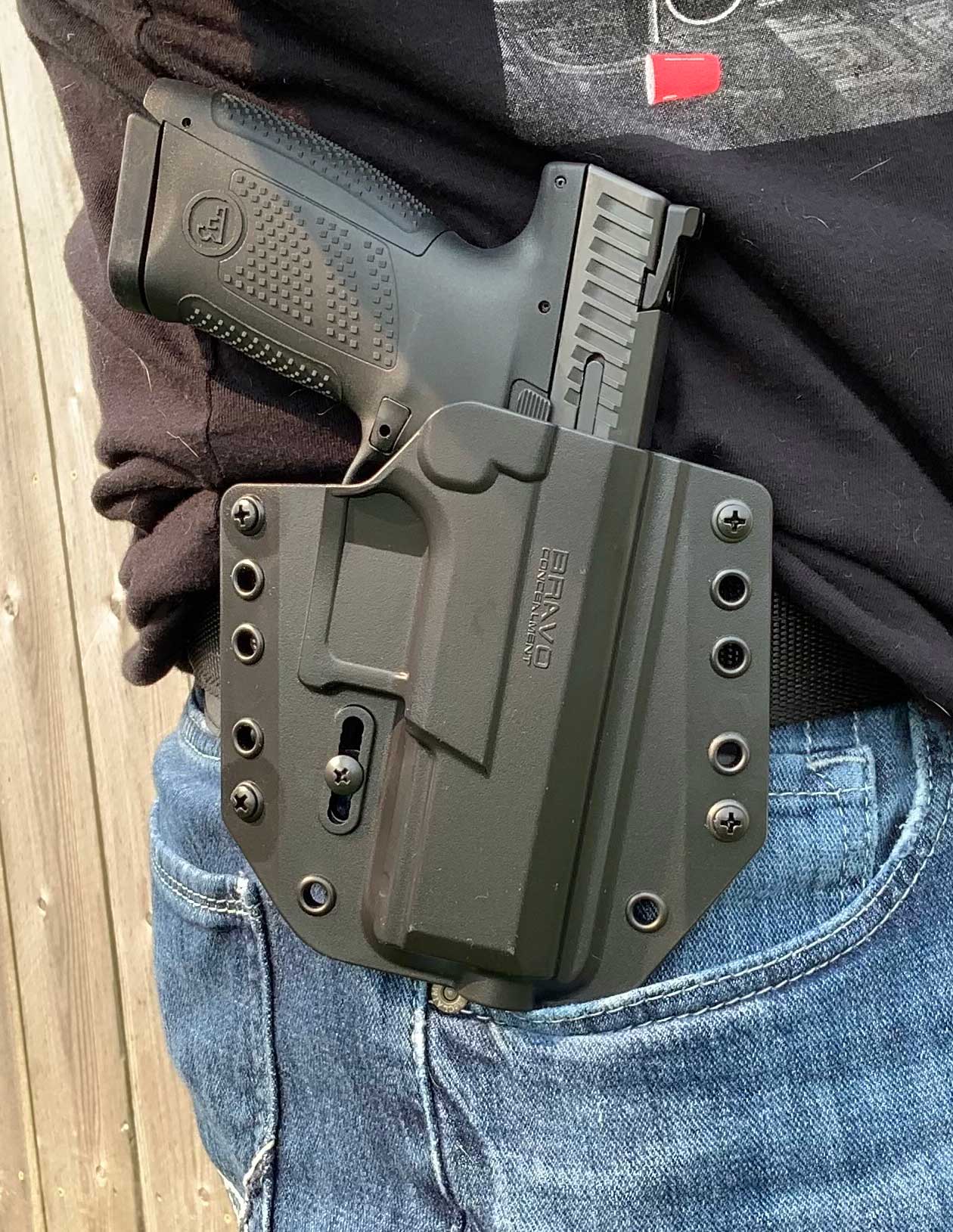
Outside the waistband is without a doubt one of the more comfortable ways to carry. OWB enables you to carry just about any size of pistol since there are no issues with clearing the waistband in larger framed pistols like with IWB carry. The major con to OWB holsters is how best to conceal your firearm easily? During the colder months, wearing hoodies and jackets make it very easy to hide a pistol. However, during the summer or if you live in the desert states like New Mexico, Arizona, Nevada, or Southern California, concealing OWB may be very difficult since wearing lighter shirts may be the only comfortable option.
SHOULDER HOLSTER
If you’re hell-bent on reliving the 1980s or need to go to a Miami Vice convention, then a shoulder holster is your best bet. Jokes aside, a shoulder holster is not necessarily the best or worst way to carry. The primary issue with carrying this way will always be having a cover garment that still allows you to access your pistol like a suit jacket. Depending on the type of shoulder holster you have, you may also muzzle (incidentally point the gun at) those people standing around you. Yet, if you are confident in the pistol you carry, observe good safety protocols, and are not concerned with the issues above, you will have one of the most comfortable carry methods. Shoulder holsters will give decent access to your pistol, and the weight of the firearm will be evenly distributed across both shoulders.
POCKET HOLSTER

One type of pistol becoming more popular is the micro-compact semi-automatic pistols, especially those chambered in 9mm. There is also a resurgence of revolvers that has many people using pocket holsters as a viable option. Pocket holsters will typically be a flat holster with a pointed wing to one side designed to snag the pocket, allowing the pistol to pull free without the holster. Using a pistol with a manual safety or a holster that securely protects the trigger is one of the first items to consider when approaching pocket carry. However, snagging the pocket when presenting your firearm could still be a problem if you decide to carry it this way. Make sure you practice drawing regularly to ensure the pistol you have does not catch as you bring your weapon to bear.
ANKLE HOLSTERS

Sometimes known as the “New York Reload,” ankle carry is a way to have a backup pistol on you while carrying in any of the above methods. In some cases, when deep concealment is needed, this could also be your primary method of carrying. Ankle holsters allow you to strap a small revolver or micro-compact semi-auto pistol to the inside or outside your ankle with little suspicion. Most people will not be staring at your shoes; rather, concentrating on your upper body. The only downside to ankle carry could be accessibility. It may be difficult and take much time to kneel, lift your pants leg, unholster your pistol and present it. However, with practice, any of these methods can be employed.
BAG/PURSE HOLSTERS
Many people will carry a backpack, purse, or even a fanny pack with them daily. Several types of purses, bags, or fanny packs have holsters already integrated into their design. So, why not use that to conceal your firearm? There is no doubt that this is a convenient way to carry, and it allows you to dress however you would like. But, having the bag pulled from you, outright losing the bag, or being able to get to your firearm quickly is a risk that you always will be taking.
As mentioned, no matter how you choose to carry a firearm, you need to vet each method to find what works best for you. You will also want to dry fire practice for each of the different positions you may carry from to ensure you can easily access and present your pistol.
LEATHER VS. KYDEX HOLSTERS
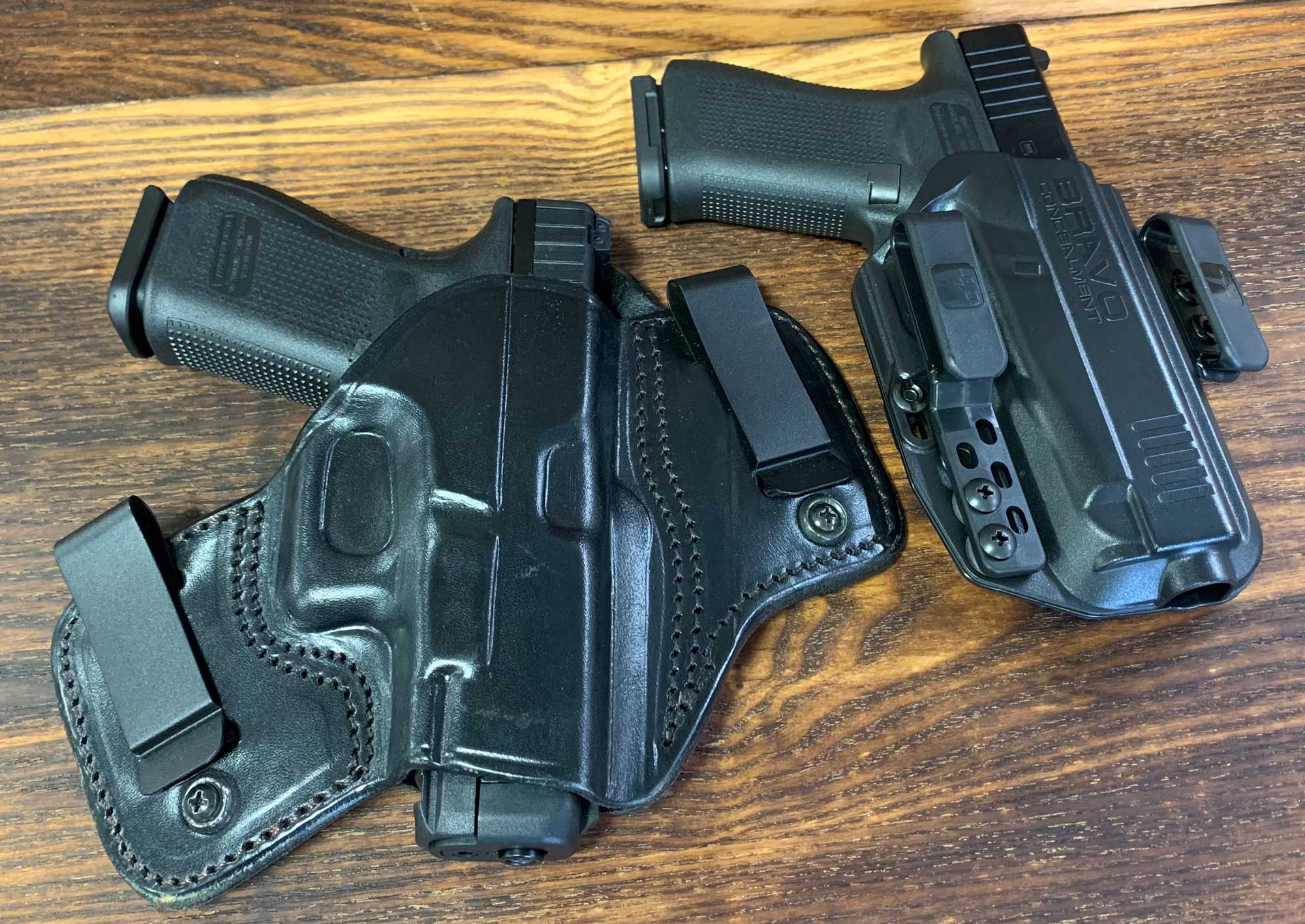
Kydex is arguably one of the most popular materials to create holsters from but can be uncomfortable. Leather softening techniques have become widely known and allow for more companies to produce more comfortable holsters. Having a holster that feels good against your body is one main reason why many people continue to trust these holsters. In addition, many law enforcement departments still use leather holsters since the soft material will not damage their suits or uniforms.
However, leather holsters do have some faults. First, most leather holsters do not have any type of friction retention, and you may have to contend with a strap to hold your pistol securely in place or no retention at all. Next, the texture of leather holsters could grab clothing or allow a shirt to stick inside a holster making re-holstering dangerous. Leather can also bend/roll as it wears down or gets wet and will become exceeding loose. Either of these issues could lead to a negligent discharge (ND) if the clothing is not cleared before re-holstering. Due to this issue, many people do not recommend leather holsters for the more modern pistols like Glock, Smith & Wesson M&P series, or the SIG Sauer P320 and P365 series of handguns that do not have a manual thumb safety.
Kydex is a material that has become very popular in the last 15 to 20 years. It is a type of thick plastic that can be easily molded into various designs. It is also inexpensive and highly rigid, allowing for holster manufacturers to design some exciting products. The inherent rigidity enables Kydex holsters to have the best friction retention of any type of holster. This feature makes these Kydex holsters readily available, and since they’re readily available, about anyone can make them, and most times, they are very affordable.
Nonetheless, Kydex has its issues too. The material’s rigidity can make for a more uncomfortable product compared to its leather brethren. The abrasiveness of the Kydex material does deter some people from using it as their primary holster for IWB carry. In addition, if a company does not use the thicker, quality Kydex, it can become brittle and break with extensive or extreme use.
However, there is the best of both worlds. Hybrid holsters are becoming more popular as innovative products have pushed the envelope on comfort and retention. A hybrid holster is a holster that fuses Kydex and leather holsters by using material from both. A Kydex front panel is used for friction retention, and a leather or synthetic backing is added for comfort. These holsters are made for most types of pistols regardless if you need an IWB or OWB holster.
ANATOMY OF A HOLSTER
Regardless of the method you choose to carry your firearm or the type of material your holster is made from, you should ensure you are buying a good quality holster. That is not to say you need to buy the most expensive holster; moreover, you need to ensure the holster you choose will do three basic things; secure your pistol, cover/protect the trigger, and provide good accessibility.
Protecting your pistol and having the confidence to know that it will not randomly fall out is extremely important. No matter if the holster has a retention device integrated into the holster, like a strap, or if it uses shape molding to retain the pistol in the holster, you want it to remain in the holster until YOU decide to remove it. A simple way to test this is to insert your unloaded pistol into the holster, turn it upside down and give it a shake. If the holster does not hold the unloaded pistol, then it will not hold a heavier, loaded pistol, and it is NOT the right holster for you. The last thing you want is to bend over to pick something up at the store and having your pistol slide out for everyone to see.
Next, the holster should completely cover the trigger assembly. This includes the entire trigger guard not allowing the opportunity for anything to introduce itself into the trigger area and cause an ND. Most modern holster manufacturers will already do this, but it is still crucial to ensure it is a feature.
Finally, the holster should be designed to allow you to present your pistol quickly and easily. It should not be overly complicated to defeat any retention devices that it leaves you yanking at your pistol several times to get it to bear on your intended target. For this reason, Kydex holsters have become extremely popular since the retention on the pistol is from the shape molding using friction to retain the firearm in the holster. The friction retention allows for a tight hold on the pistol and allows for an easy draw stroke.
CARRY POSITION
The carry position is going to be critical in making the carrying experience as comfortable as possible. With IWB holsters, one of the most popular ways to carry is the appendix position (image A.), where the holster is at your 12 o’clock position. This is known as AIWB (appendix inside the waistband), and the reasoning behind this is to quickly protect and access your pistol.
But others prefer to carry at their 3 or 4 o’clock position for comfort. This also allows them to carry with both IWB and OWB holsters with no hesitation in the speed of their draw stroke, regardless of the type of holster they may be using on a particular day. The draw stroke will be the same for IWB as it would be for OWB in the 3 or 4 o’clock position (image B.), which is a great advantage over someone that may switch from AIWB to hip or behind the back carry.
A.
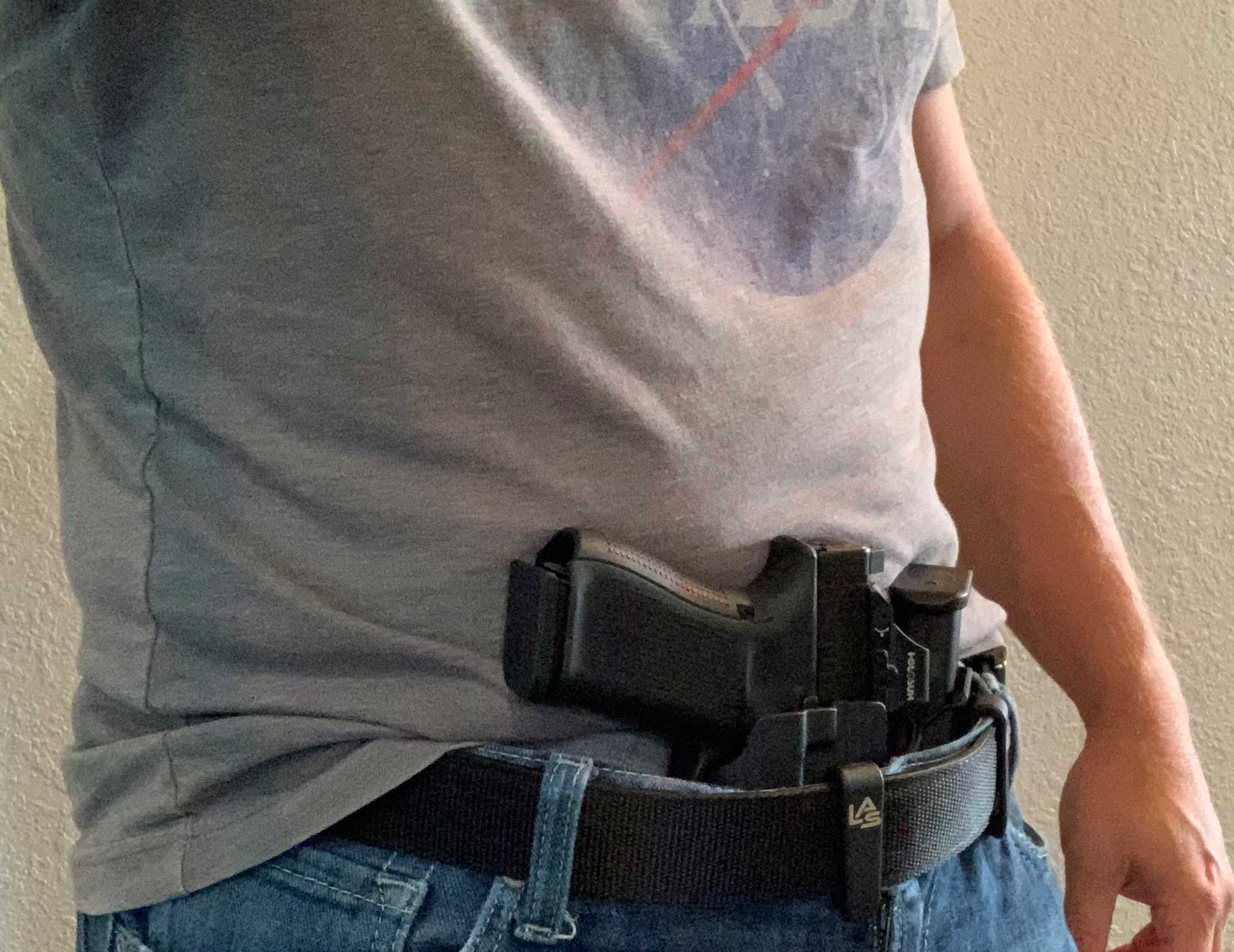
B.
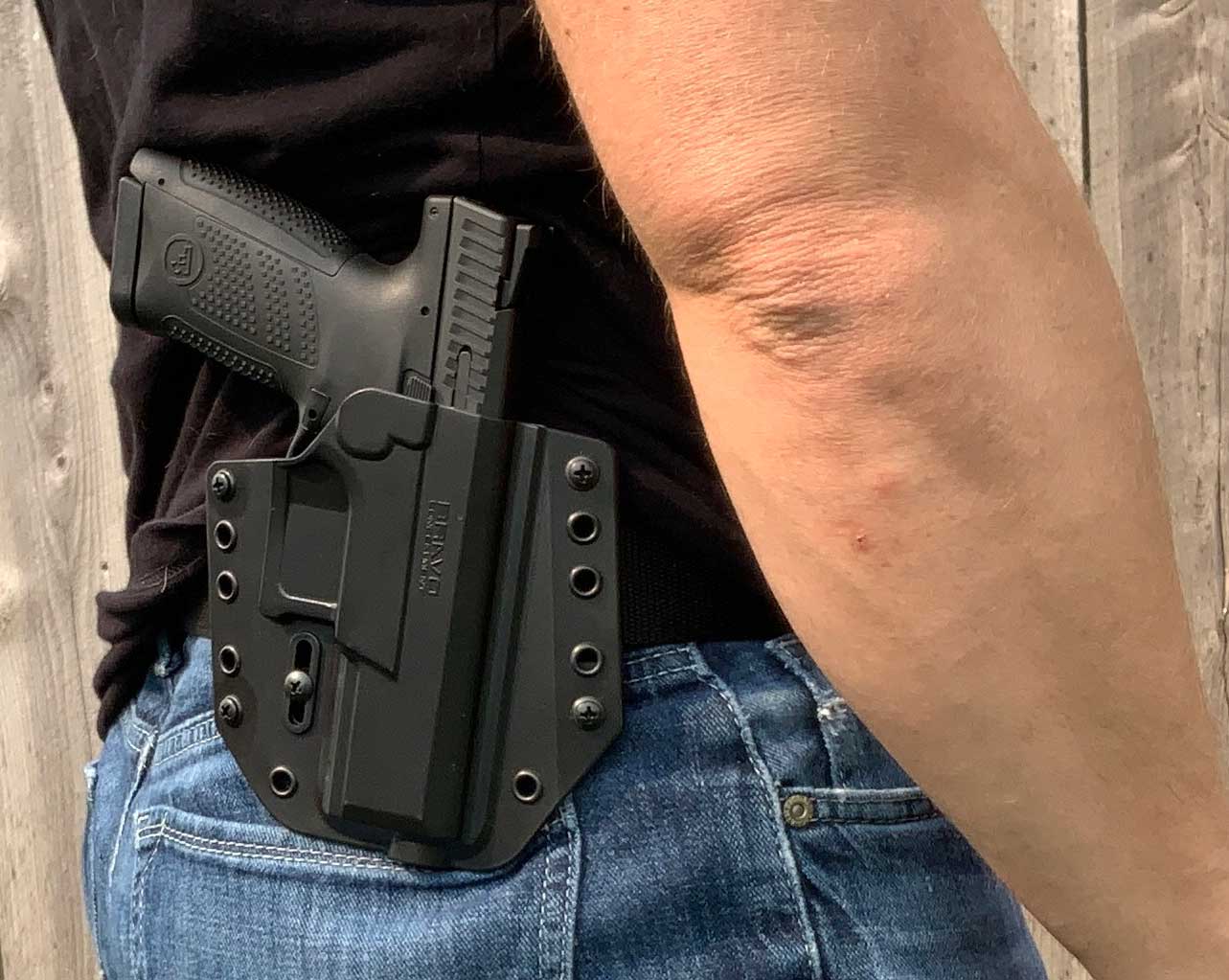
Other carry positions might be small of the back (image A.), ankle, cross draw, purse/pack carry, or even a shoulder holster (image B.). These all have their merits and could be more comfortable in some cases. However, they also all have the same central issue, accessibility. Drawing your firearm should be done as quickly and subconsciously as possible. Over rotating, bending down, fumbling through a bag, or defeating cumbersome cover garments can drastically diminish your speed in presenting your weapon. For this reason, IWB or OWB have become the most convenient and popular way to carry.
But don’t let this deter you from trying different manners of concealed carry. What works for you may not work for someone else! So, using a nontraditional holster or position may prove to be precisely what you need.
A.
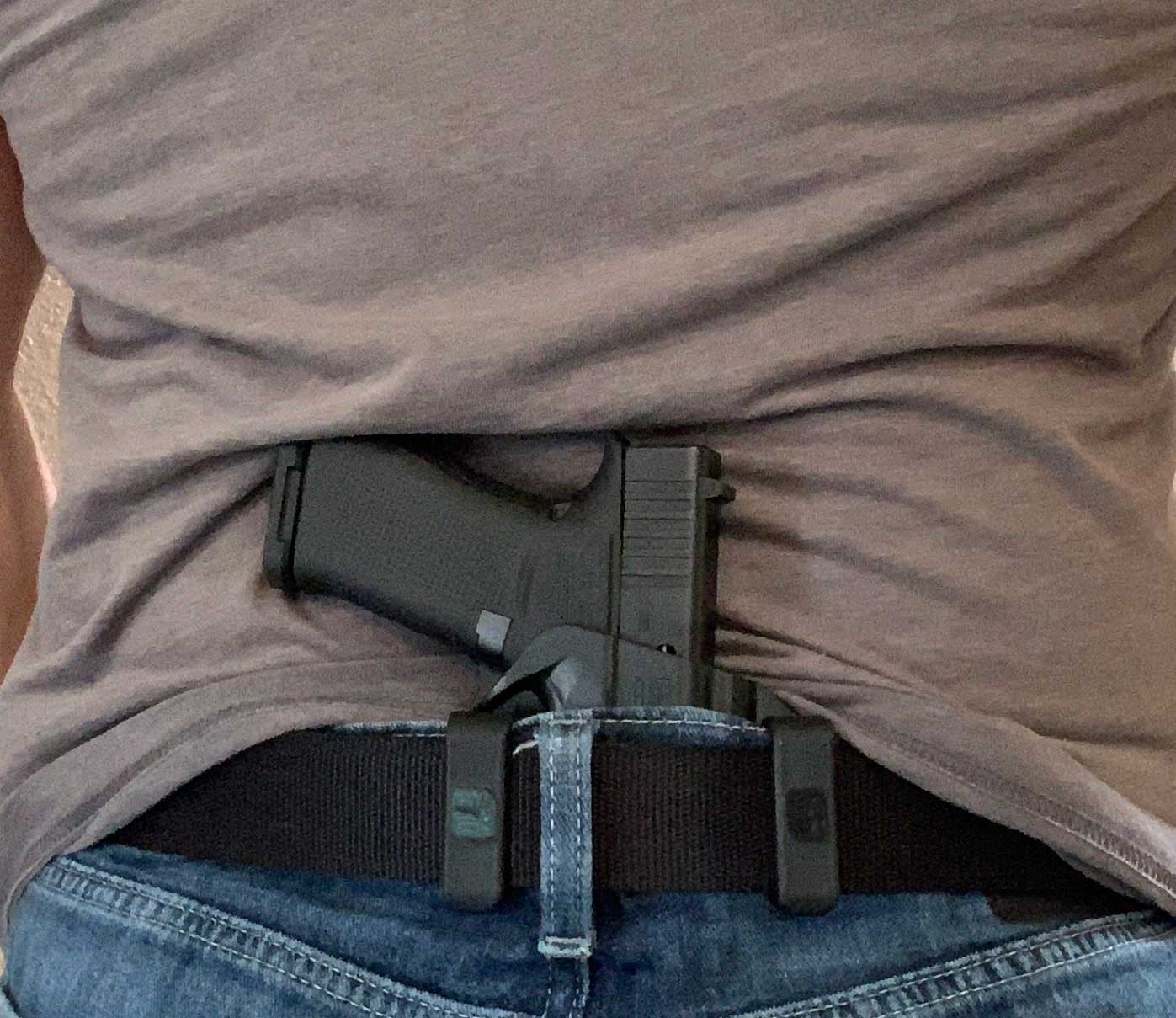
B.

CONCLUSION
Experimenting with different positions and holsters will take time and could cost more money than you may be willing to part with. If you can borrow a holster from someone, that would be a great way to find a new and possibly better way to carry. It will also save you much money instead of buying a holster, trying it, not liking it, and discarding it as you move to the next way. In addition, if a company offers a “no questions asked” return policy, definitely leverage that to get exactly what you want and need. There is no reason to adapt yourself around a holster, and the holster should adapt to you. Once you have found what works best for you, the next most crucial step will be to train with your new holster. Ensure it becomes as comfortable securing your pistol to your body as your pistol provides confidence in your self-defense.

